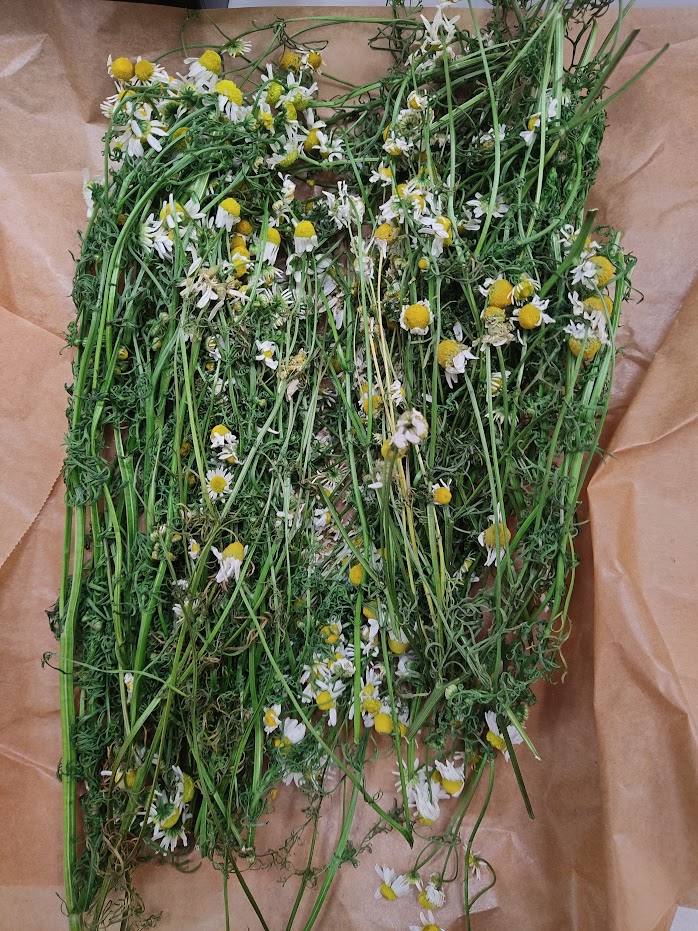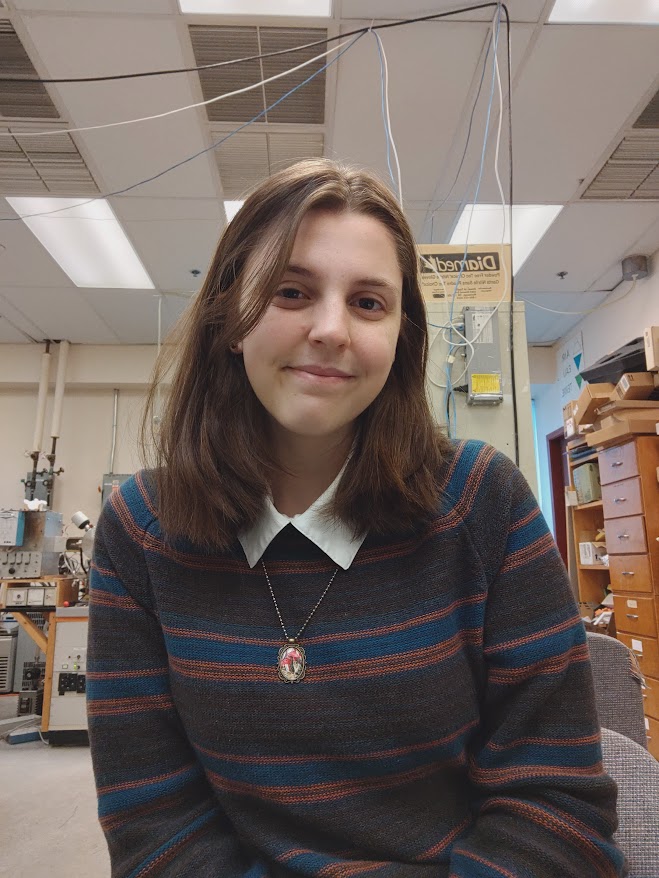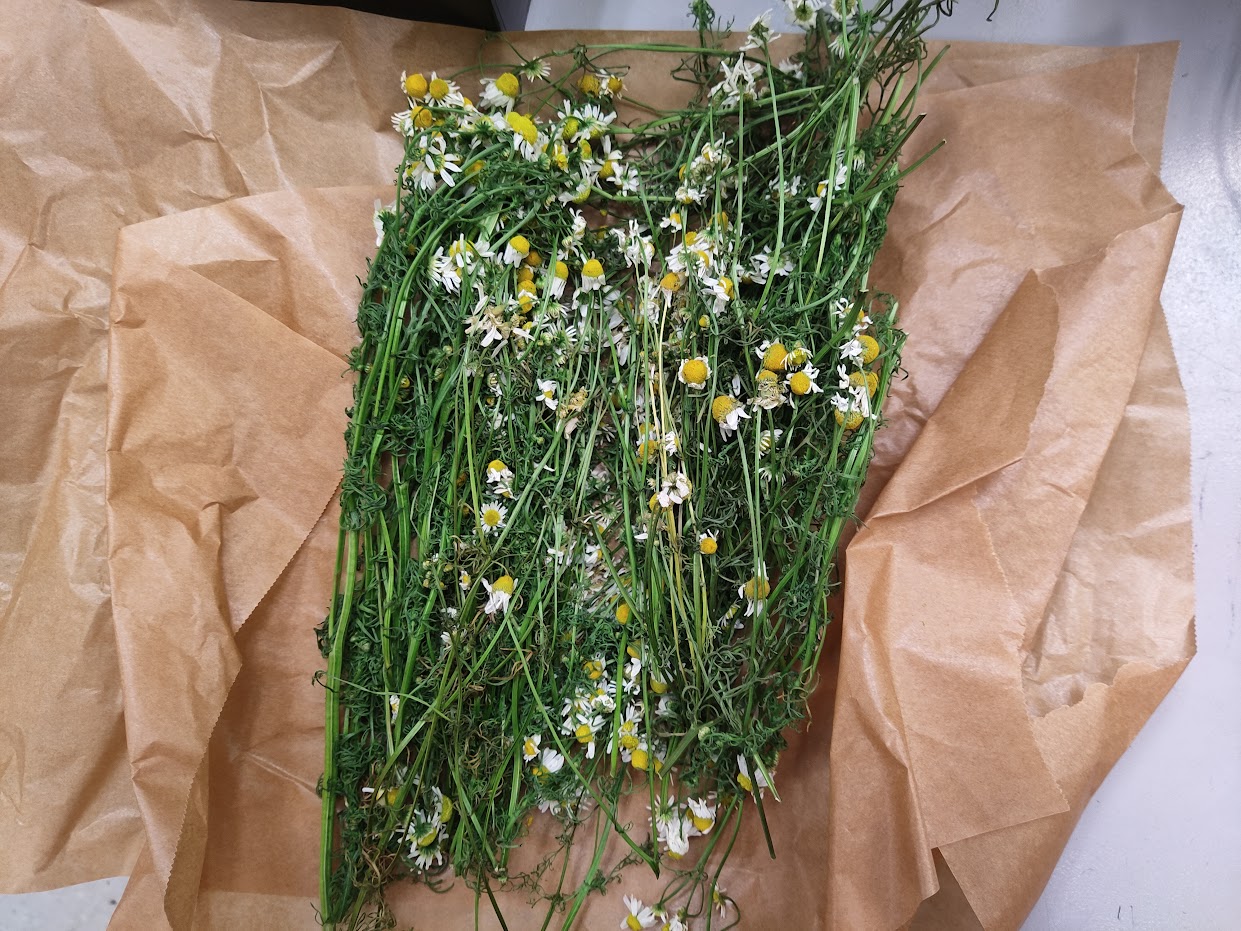
German Chamomile Hydrosol
Chamomile is a general term referring to many daisy-like plants. The word chamomile comes from the Greek “khamaimēlon”, meaning “earth apple”. Two species of chamomile, Roman chamomile and German chamomile are commonly used in teas.
Chamomile, as one might expect, has a long history as a medicinal herb. It is mentioned in the Ebers Papyrus, an ancient Egyptian medical text dating back to 1550 BCE. At the time, it was used as a poultice to soothe rashes and was ingested to treat fevers. It also has a history in Rome, where chamomile tea was brewed for headaches. The usage continued through the Middle Ages in Europe, where chamomile tea was used as a diuretic and in tonics for fatigue. Nowadays, chamomile tea is commonly used as a home remedy to help with anxiety and mild insomnia.
(1)Srivastava, J. K.; Shankar, E.; Gupta, S. Chamomile: A Herbal Medicine of the Past with Bright Future. Mol Med Report2010, 3 (6), 895–901. https://doi.org/10.3892/mmr.2010.377.
(2)Henry George Liddell, Robert Scott, A Greek-English Lexicon, χα^μαί-μηλον. https://www.perseus.tufts.edu/hopper/text?doc=Perseus:text:1999.04.0057:entry=xamai/mhlon (accessed 2023-08-09).

I’m Rose Anderson-Duvall, an USRA student working in the J. L. Holmes Mass Spectrometry Facility in summer 2023. I am an undergraduate student entering my third year of Biopharmaceutical Science at
uOttawa. My mother instilled a love of science in me when I was very young, and I never grew out of it. Studying hydrosols is, among many other things, a brilliant insight into the metabolites of plants, a perfect intersection between my two passions, biology and organic chemistry.
Working in this laboratory, I’ve learned how to analyze, identify, and quantify compounds
using the GC-MS in addition to learning various extraction techniques for making hydrosols.

Creation of Chamomile Hydrosol
22.8g of fresh chamomile flowers were put into a microwave distillation vessel along with a 400mL beaker. A 250mL ice cone was fitted to the lid of the vessel and the vessel was put into a kitchen microwave. The vessel was then microwaved on high power for nine minutes. Afterwards, the liquid collected inside the beaker was poured into a collection bottle and the beaker was replaced into the vessel. A new ice cone was fitted to the lid the process was repeated once more. A total of 0.5L of chamomile hydrosol was collected.
Analysis of Hydrosol
The chamomile hydrosol was put through SPE (solid phase extraction) prior to being injected into the GC-MS. This is done in order to separate the analytes from the water and elute them with a nonpolar solvent (1:1 MeOH:ACN). It also ensures larger particles which may damage the GC column are removed.
The headspace of the chamomile was also analyzed by pushing air through a conditioned SPE cartridge repeatedly for two minutes. It was then eluted in the same manner as the hydrosol.
Chamomile was a simple hydrosol containing only four compounds, all fairly dilute. The most concentrated compound in the chamomile was bisabololoxide A, at 30 mg/L. The next most abundant compound is carvacrol, at a much lower concentration of 5mg/L. The other two compounds in the hydrosol, α-bisabolol and artemisia ketone are both present at 3mg/L.
The headspace contained a total of five compounds, including two unknown terpenes. The most abundant compound however, was crithmene, making up 27.7% of the overall headspace.
Conclusion
The most abundant compound in the chamomile hydrosol by a large margin was bisabololoxide A, at a concentration of 30mg/L. The chamomile used for this was locally sourced, and its species was unknown at the beginning. Due to this analysis, a positive identification of the species used was possible, as only German chamomile contains bisabololoxide A.
The headspace of the chamomile contained a few unknowns but was mainly comprised of crithmene. Interestingly, the headspace of the flowers and the hydrosol contained no overlap in terms of their composition. As for the applications of the hydrosol, the hydrosol had a different scent then one might expect from chamomile tea, but was not unpleasant. However, due to all the compounds in it being so dilute, the hydrosol is likely limited to cosmetic and aromatherapy applications.
